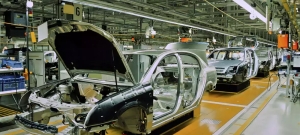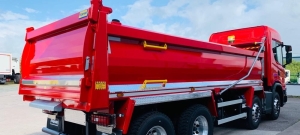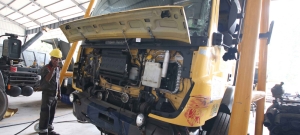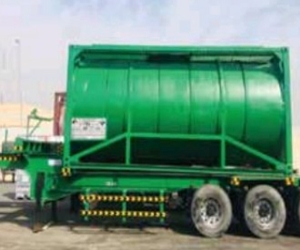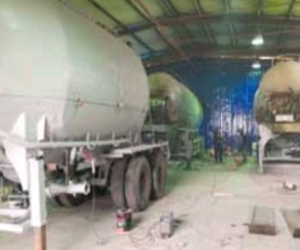Automobile Industry

Today, of course, the automotive vehicle has become a basic necessity. Furthermore, the business of making and servicing automobiles has become one of the biggest businesses in the world. An automobile industry employs thousands of men and women directly. Also, because of the enormous quantities of raw material, such as steel, cloth, glass and rubber, that the automobile industry uses, it provides jobs for millions of the other people in related industries
Vehicle Assembly
Motor vehicles, both the passenger cars and goods trucks, are made up of two major assemblies. 1. Chassis. 2. Body.
In an unit frame and body design it is difficult to separate chassis from body. However, the chassis is considered to consist of all th1e major units necessary to propel the vehicle, direct its motion, stop it and allow it to run smoothly over uneven surfaces. The chassis of a late model passenger car consists of a rigid frame that forms a skeleton to hold all the major units together. The engine is mounted in the forward end of the frame and is connected to the clutch and transmission unit to from a compact power assembly. The transmission is connected to the final drive gears through the propeller shaft and universal joint. The final drive gears and differential are enclosed in a housing that integral with a rear-axle housing attached to the frame through the rear springs. The two axles leading from the differential to the rear wheels are enclosed in rear axle housing.
Chasis
Chassis is a French term and was initial.ly used to denote the frame or main structure of a vehicle. It is now extensively used to denote the complete vehicle except the body for the heavy vehicle having a separate body. For light vehicles of mono construction types having body integral with frame, it denotes the whole vehicle excluding the additional fitment inside the body. The chassis contains all the major units necessary to propel the vehicle, direct its motion, stop it, and allow it to run smoothly over uneven surfaces. It is the main mounting for all the components including the body. It is also known as carrying unit.
The engine may also be fitted at the back portion of the chassis, like in Volkswagen of West Germany. Leyland bus England. This arrangement does not require Long propeller shaft. Gearbox and differential are combined in one unit.
The engine may also be fitted at the Centre of the chassis. This arrangement provides full space of chassis floor for use. In Royal tiger World master buses of Delhi Transport the engine are fitted at the center of the chassis.
Classification of Chasis
According to the fitting of engine, a classification of chassis is as follows:
1. Full forward 2. Semi-forwarded 3. Bus chassis
4. Engine in front 5. Engine in Centre
Full forward chassis is that in vehicle the engine is fitted outside the driver cabin or seat like in cars and old Tata truck. In this type of arrangement, the driver seat is far enough from the front wheels and is not able to see just in front of the vehicle..
In semi-forward chassis, half portion of the engine is in the driver cabin and the remaining half is outside the cabin like in standard, Bedford pick up. It provides better visibility of road to the driver. In bus chassis, the whole engine is fitted in the driver cabin. It provides an increased floor space in the vehicle. The driver seat is just above the front wheel and he can see the full front road right from the front wheels.
In most of the vehicles, the engine is fitted in front portion of the chassis. The drive is given to the front wheels only like in matador vehicles.
The frame or under body is the main part of the chassis, on which the remaining parts of the chassis are mounted. It is a right structure that forms a skeleton to hold all the major part together. The engine is mounted in the forward end of the frame and is connected to the clutch and transmission unit to from a complete power assembly. At the rear end of the frame, the rear axle housing is attached through the rear spring. The wheels and tyre assemblies support the frame. The steering system has some parts bolted to the frame and some to the body. The petrol tank is fastened to the rear of the frame.
Although the chassis frame is strong enough, it does not require any care. However, if the vehicle is carelessly driven on rough road if it is heavily loaded, some defects occur in the frame which are described as follows:
1. Loos rivets. Dou to the rough driving and heavy loads, the chassis rivets become loose. The loose rivets are easily rusted. The frame member also become loose and create noise. Before servicing the vehicle, the loose rivets must be checked and replaced. Following points should be kept in mind while replacing the loose rivets:
(a) Cut the rivet head by drill or gas torch. Don't use chisel. By cutting the rivet head by chisel, the size of the rivet hole increases more and also it is deformed.
(b) If the hole size is increased, then use the over size rivet so that it can fitted tightly in it.
(c) Before fitting the new rivet, clean the hole carefully, there should be no burr in it.
(d) Properly heat the new rivet and fit it carefully by riveting hammer. Don't fit cold rivet, it does not make strong joint
(e) Don't fix the loose rivet by welding but replace it.
2. Crack. Cracks may also occur in the chassis frame. Cracks can be found out if seen carefully. If not visible, then make the chauk solution in water and paste it on the frame where crack is suspected. Let the solution dry and the slightly hammer the frame. The crack will be seen clearly. Repair the crack so on otherwise it will increase and the frame will break. If you don't have the arrangement for repairing the crack, then drill the holes, one on each side of the crack. The holes will check the crack for increasing it. The holes work like the first the aid for the crack. After that make arrangement for repairing the crack.
To repair the crack on the frame, do as folllows:
- Make V-groove on the crack.
- Chamfer the upper portion of the V-groove.
- Fill theV-groove by electric arc welding.
- Grind the upper surface of the weldingi.
- If the crack is long enough, then weld a strip on this welded surface. It gives more strength to the cracked frame.
If the alignment of the frame is bent due to the accident, it is adjusted by heating the bent member and the straitening by jack. The straitening the frame by using screw jack. Check the alignment of the repair frame by measuring the dimension between the selected points as specified in the service manual of the vehicle.

